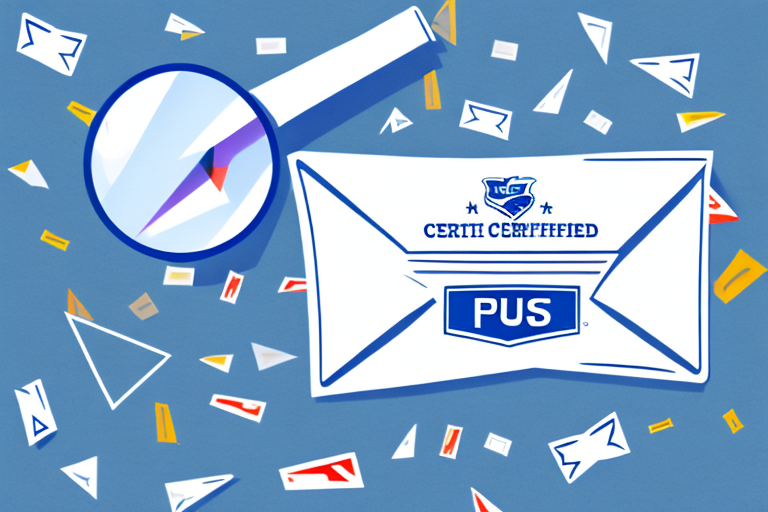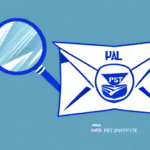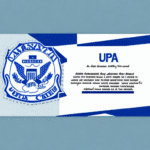What Is the Price of Certified Mail? A Comprehensive Guide
Sending important documents and packages through the mail requires a reliable service that provides proof of delivery. Certified mail from the United States Postal Service (USPS) offers this assurance. In this comprehensive guide, we'll explore everything you need to know about the price of certified mail, including its definition, benefits, and the factors that influence its cost.
Understanding Certified Mail
Certified mail is a USPS service that offers proof of mailing and delivery for important documents and packages. When you send mail via this service, you receive a mailing receipt that includes the date and time of mailing, along with a unique tracking number to monitor the delivery status. Additionally, the recipient is required to sign for the mail, providing tangible proof of receipt.
Using certified mail ensures that your important documents are delivered securely and on time. It's especially beneficial for sending legal documents, contracts, and other sensitive materials that require acknowledgment of receipt. Moreover, certified mail can serve as evidence in legal proceedings, helping resolve disputes over delivery dates and receipt confirmations.
Benefits of Using Certified Mail
Proof of Mailing and Delivery
Certified mail provides a verifiable record that your mail piece was sent and received. This is crucial for time-sensitive and legally binding documents.
Signature Requirement
The recipient must sign for the mail, ensuring that the intended party has received the document. If the recipient is unavailable, a notice is left, and the mail can be picked up at the local post office.
Tracking and Monitoring
With a unique tracking number, senders can monitor the progress of their mail piece in real-time through the USPS tracking system, available on the USPS website.
Types of Certified Mail Services
USPS offers several certified mail services tailored to different needs:
- First-Class Mail: Cost-effective option for standard-sized envelopes and packages.
- Priority Mail: Faster delivery with additional services like insurance and tracking.
- Priority Mail Express: The fastest USPS service, offering overnight delivery to most locations.
Choosing the right service depends on factors such as the urgency of delivery, the size and weight of the mail piece, and budget constraints.
How to Send Certified Mail
Sending certified mail is straightforward. Follow these steps to ensure proper handling:
- Prepare your mail piece by filling out the mailing label and selecting the appropriate USPS service.
- Complete the Certified Mail form (PS Form 3800) and attach it to your mail piece.
- Visit your local USPS office or schedule a pickup.
- Retain your mailing receipt and tracking number for your records.
For added security, consider using USPS's insurance options to protect valuable items against loss or damage during transit.
Cost of Certified Mail
The cost of certified mail varies based on several factors, including the type of service, weight, size, and destination of the mail piece. As of 2024, the standard rates are as follows:
- First-Class Mail: Starting at $3.60
- Priority Mail: Starting at $7.95
- Priority Mail Express: Starting at $26.35
Additional services, such as return receipts or restricted delivery, may incur extra fees. For the most current rates, visit the USPS price page.
Factors Influencing Certified Mail Costs
Several elements can affect the overall cost of sending certified mail:
- Service Type: Faster services like Priority Mail Express are more expensive than standard First-Class Mail.
- Weight and Size: Heavier and larger mail pieces cost more to send.
- Delivery Speed: Expedited delivery options increase costs.
- Distance: Longer distances generally result in higher postage fees.
- Additional Services: Options like return receipts and insurance add to the total cost.
International certified mail may require additional fees and documentation, including customs forms and international postage rates. Check with USPS or the appropriate postal service for specific pricing and requirements.
Comparing Certified Mail Providers
While USPS is a primary provider of certified mail services, other shipping companies like FedEx and UPS also offer similar options. Comparing these providers can help you choose the best fit for your needs:
- USPS: Generally more cost-effective for standard certified mail services with extensive domestic coverage.
- FedEx: Offers a range of certified services with advanced tracking and faster delivery options, but at a higher cost.
- UPS: Provides reliable certified mail services with robust tracking features, suitable for business needs.
Consider factors such as delivery speed, cost, tracking capabilities, and customer service when choosing a provider. Reviewing customer feedback and industry ratings can also inform your decision.
Tips to Save Money on Certified Mail
Managing the cost of certified mail doesn't have to be challenging. Here are some strategies to keep expenses down:
- Select the Appropriate Service: Use standard First-Class Mail when speed isn't critical.
- Consolidate Mailings: Sending multiple items together can reduce individual postage costs.
- Avoid Unnecessary Add-Ons: Only opt for additional services like insurance or return receipts when necessary.
- Use Online Postage Services: Purchasing postage online can offer discounts and streamline the mailing process.
Additionally, planning ahead and scheduling bulk mailings can lead to further savings.
Tracking and Delivery Confirmation
One of the significant advantages of certified mail is the ability to track its status. By using the unique tracking number provided, senders can monitor the delivery process in real-time through the USPS tracking tool.
Upon delivery, a signature is required, ensuring the mail piece reaches the intended recipient. If the recipient is unavailable, USPS will leave a notice, allowing them to retrieve the mail from their local post office.
It's essential to distinguish certified mail from registered mail. While both provide tracking and delivery confirmation, registered mail offers enhanced security measures, making it suitable for high-value or irreplaceable items.
What Happens If Certified Mail Isn't Delivered?
If a certified mail piece isn't delivered, several scenarios may unfold:
- Lost or Damaged Mail: You can file a claim for reimbursement with USPS if the mail is lost or damaged during transit.
- Recipient Unavailable: If the recipient cannot sign for the mail, a notice will be left, and the mail can be picked up from the local post office.
- Refusal to Accept: If the recipient refuses to accept the mail, it will be returned to the sender.
In such cases, retaining your mailing receipt and tracking number is crucial for resolving any issues with USPS.
In conclusion, certified mail is an invaluable service for sending important documents and packages, offering proof of delivery and enhanced security. By understanding the costs, benefits, and best practices, you can ensure your mail pieces are handled efficiently and securely.
Additional Considerations
While certified mail provides robust delivery confirmation, it doesn't ensure that the recipient has read or retained the document. For critical communications, consider using additional services like return receipts or electronic confirmation to verify receipt.
Furthermore, if you are sending items of significant value, opting for registered mail may offer the extra layer of security needed to protect your valuables.






















